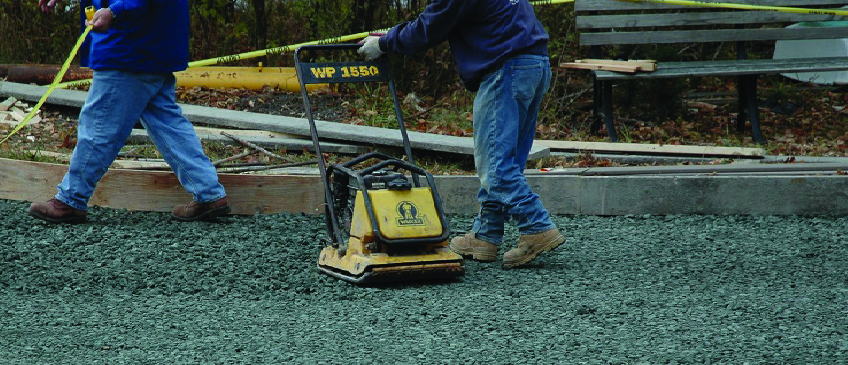Date: June 3, 2015
News - All About That Base: 3 Tips for Concrete Base Preparation

You work hard to ensure that the concrete you place and finish is of the highest quality. One of the most important things you can do is make sure the sub base is properly prepared before the concrete comes. There are a lot of components to a successful concrete placement, but one of the most important is way before the concrete even shows up.
Sub grade is the natural occurring soils that are on the site. It is usually uniformly well compacted naturally. Sub base is any material that is brought to it to stabilize or strengthen the sub grade. Because of concrete’s strength and the presence of a quality sub grade, may slabs will not require a sub base. No matter if you are placing on the native sub grade, or an imported sub base, there are three important points to consider:
1. Get Uniformity
Compaction of the sub base is a good thing, but even more important is a uniform sub base. If the concrete needs to bridge a soft spot in the sub base, then it is very likely to crack in that spot. If trucks are making ruts in the base in some places, but not others, it’s usually a sign that more work needs to be done.
2. Moisten the Base
Concrete mixes are optimized for performance by balancing water with other ingredients. An overly dry, porous sub base will act like a sponge, stealing water from the concrete mix and therefore affect set time and concrete quality. You may want to consider a moisture barrier under the slab. You want to be careful not to put too much water on the ground and make a muddy mess.
3. Allow for More Concrete at the Edges
If standing in the middle of a concrete slab, the downward forces you create on the concrete is a complete circle. If you move to the side of the slab, your weight is now distributed over the area in a half-circle, so it’s as if you doubled in size. If you move to a corner, your weight would be distributed in a ¼ circle making your weight exert four times the force on the slab. Because of the weight distribution, slabs should be thicker at the edges to accountant for the concentrated weight distribution.
As concrete professionals, we don’t always have control over the base preparation so make sure that you communicate well with whoever prepares the base. Be sure and leave plenty of time between inspecting the base and placing the concrete so you have time to make the right changes if needed.